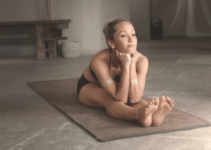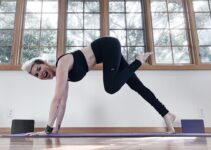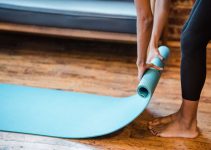- Yin Yoga Basics
- Yin vs. Restorative Yoga
- Yin and Yang
- Who is best for?
- What to expect
- Benefits
- Tips and factors
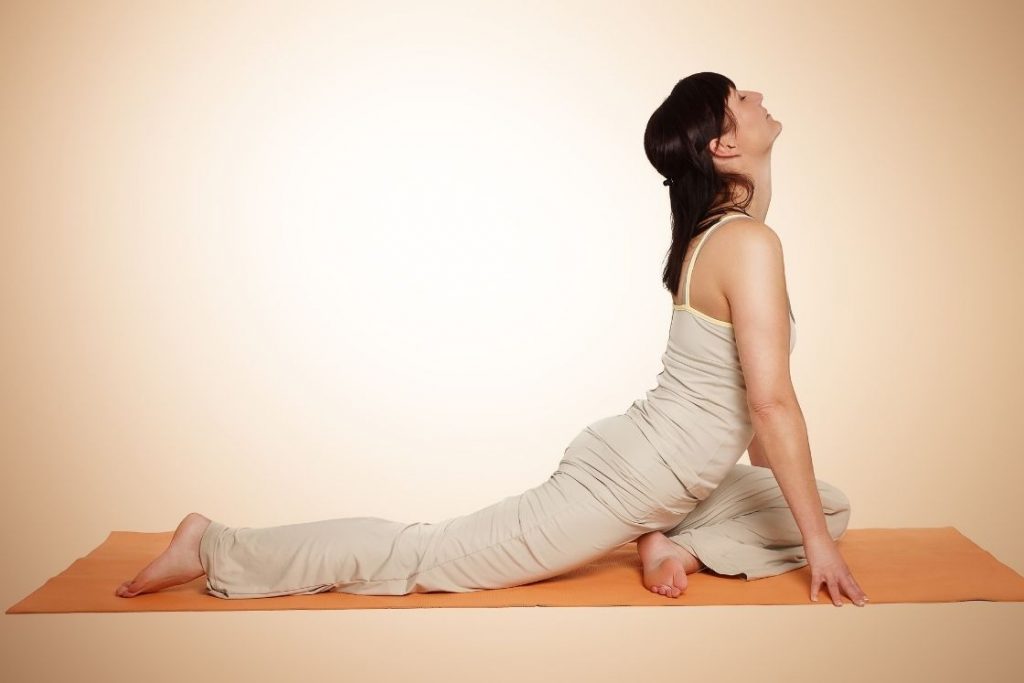
The Yin Yoga concept has been gaining popularity due to its relaxing nature. Due to its passive nature, the muscles are used minimally and are gently engaged when practising the different asanas of Yin Yoga.
The relaxing nature of this yoga style along with the long-held postures and gentle movement has made it popular in today’s hectic and busy schedules. The postures help in creating breath awareness which eases the mind by reducing stress and tension and enhancing mindfulness.
Continue reading this article to find out the basics of yin yoga, its origin, the benefits, who it’s best for, and tips to get started.
What is Yin Yoga?
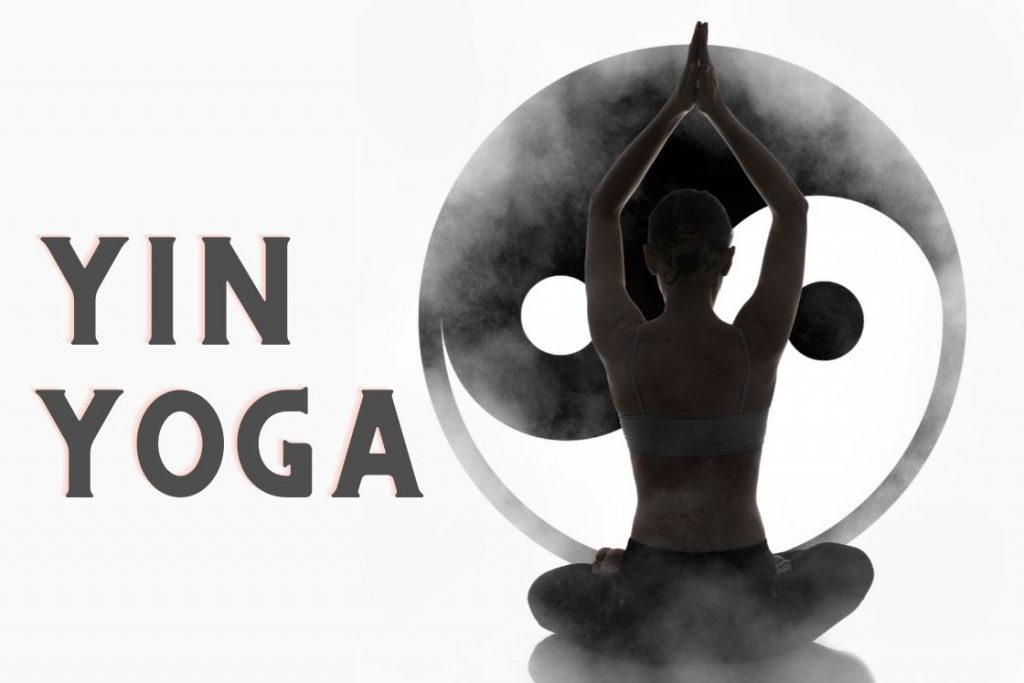
Yin Yoga is a slow and steady-paced meditative style of yoga that focuses on connective tissues. Rather than actively involving the muscles, it relaxes them through passive holding and seated postures. The poses are held for a longer duration than other yoga styles.
Yin yoga is good for balancing the nervous system and providing deep relaxation to connective tissue (aka yin tissues – ligaments, tendons, and fascia) for better circulation and flexibility of the joints.
Just like in meditation, your focus is on stillness and surrender rather than perfecting a posture or building muscle strength. It is an extremely effective form of yoga that will help in finding a release from the accumulated tension of day-to-day challenges.
The grounding and nurturing asanas of yin yoga can be extremely effective to your joints and the fascia (connective tissues around the joints). The purposefully slow movements make your body and mind still, deeply relaxed and stay in the present.
Origin of Yin Yoga
Unlike the other yoga styles that have their origins in India, Yin Yoga takes its inspiration from the Chinese Taoist practices. Also called Taoist Yoga or Tao Yin, the postures in this for were held for a longer duration as also found their way in Kung Fu training.
In the 1970s, Paulie Zink introduced the concept of stretching martial arts techniques to the western world. However, Yin Yoga was popularized by one of Zink’s students, Paul Grilley, in the west. He modified the yin yoga practice by combining principles of Taoist Yin, Hatha Yoga, and the meridians of traditional Chinese medicine.
Grilley, who is a yoga, meditation, and martial arts enthusiast, along with his student “Sarah Powers” coined the term Yin Yoga. They are considered one of the best Yin Yoga teachers in the world whose efforts have made this yoga style approachable to beginners and experts alike.
Yin Yoga vs. Restorative Yoga
There is often a misconception that yin yoga and restorative yoga are the same. While there may be some similarities, the essence of both is completely different.
Yin yoga is mostly focused on stretching, strengthening, and lengthening the connective tissues and muscles whereas restorative yoga is mainly practised to cure injuries and releases body and mind tension.
While both styles of yoga use props, yin yoga uses props as a support for the deepening or softening of the stretch. Restorative yoga uses more props than yin yoga to get you in a more relaxed state so that injured muscles can be moved slowly.
Compared to yin yoga, where poses are held for 3-5 minutes, restorative yoga poses are held for 5-10 minutes.
Yin yoga works on activating the muscles to bring about a change in an already healthy body to enhance performance while restorative yoga is more about supporting the healing process of an injured body.
The Concept of Yin and Yang
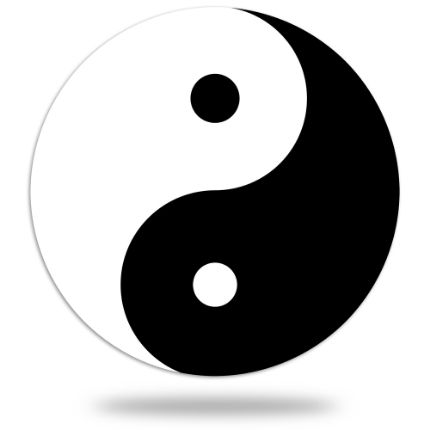
It is impossible to not talk about yang when talking about yin as they go hand-in-hand. Although they present a stark difference of nature’s forces, they are almost like the concept of Ida Nadi (moon) and Pingala Nadi (sun) from the Hatha Yoga.
Yin represents passive, stable, gentle, cool, slow, and soft nature. The moon, night, femininity, water are also associated with Yin. Its opposite characteristics such as fast, active, changing, moving, hot represent Yang. Yang is also associated with masculine, day, light, and warm.
Compared to bodily aspects, your connective tissues such as tendons, ligaments, fascia are Yin while the blood and mobile muscles are Yang.
Though they are complete opposites, they cannot survive on their own. As per Taoist principles, everything in nature has the qualities of Yin and Yang, which is required to create a balance. They cannot be classified as “good or bad” however, they are complementary forces that work together.
Similarly, in yoga, you will also see that some asanas and styles are more passive and gentle in nature compared to others that are active and dynamic (Vinyasa, ashtanga, power yoga, hot yoga, etc). Some work on restoring the calmness of the mind while others focus on generating internal heat.
Yin yoga is calming, relaxing and gentle style of yoga that emphasizes cultivating yin energy awareness in the body and mind.
Who is Yin Yoga best for? And who shouldn’t practice?
Yin yoga is the ideal yoga style for anyone, from beginners in yoga to experienced one’s. However, it’s best for individuals who are usually in a hurry, have overstimulated energy which fickles the mind and makes them aggressive.
For such types of persons, yin yoga is most recommended;
- People who want to balance intense workouts,
- People in labour intensive environment or who keep their feet active a lot
- Want to calm mind,
- Indulge in reflective yoga practice,
- Want to get away from busy lifestyle and get some peace.
However, it should also be noted that, just like other types of yoga, there are exceptions. If you have a serious medical condition it is best to consult your instructor or a yin yoga expert first.
Pregnant ladies should have the full consent of their doctors before starting Yin Yoga. They must discuss the range of motions they can perform and focus more on benefiting mentally and energetically.
For people with low bone density (osteopenia) or osteoporosis, it is better that you practice yin yoga with caution. Talk with your instructor and see how you can modify certain asanas that do not cause any injury or discomfort, especially to your spine.
Also, people with past traumas, clinical depression, and severe anxiety should first consult their doctor or therapist and overcome the severity. Sometimes, bottled-up emotions can do more harm than good.
What to expect in Yin Yoga Class?
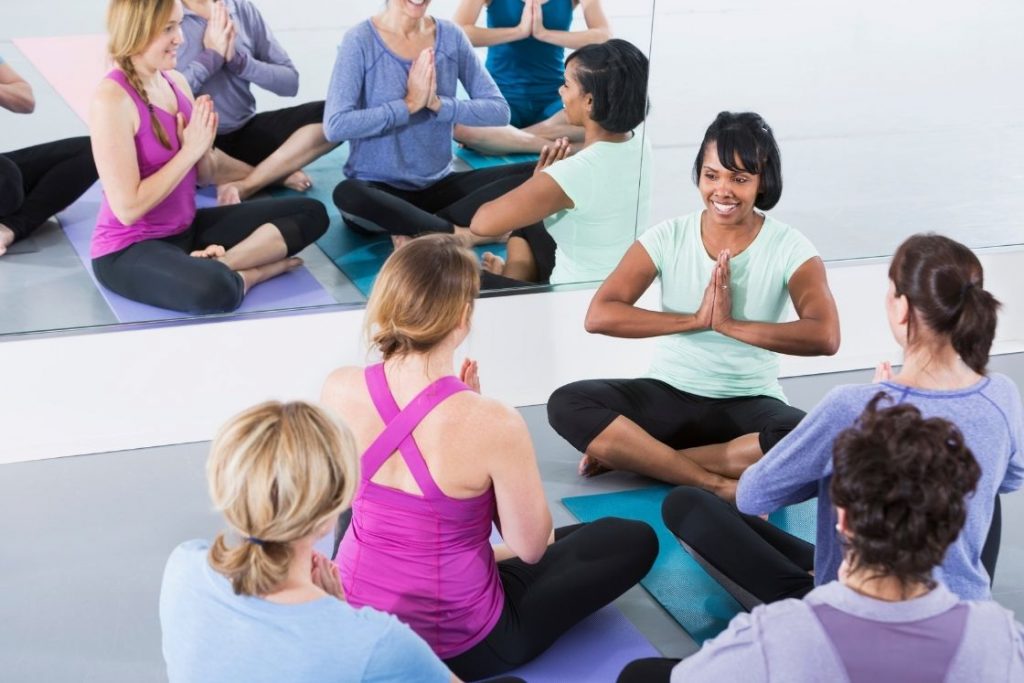
Before you start looking for a class to try yin yoga the first time, it is better to have an idea of what typically happens in a Yin Yoga class.
A yin yoga class will generally start with deep and slow breathing, to get your body and mind relaxed. It will be followed by performing poses such as butterfly pose, child’s pose, straddle, etc. Most beginner yin yoga sessions will have at least 5 to 6 poses as you will be holding each pose for an extended time.
The Yin poses are mostly passive and are performed in a seated or reclining position, hence it is recommended that you sit on a yoga mat and keep your props ready at the side. These poses focus on stimulating and stretching the connective tissues of the lower body parts such as hips, pelvis, inner thighs, lower spine.
In each pose, you will also be guided to make yourself comfortable by the use of props such as blocks, blankets, bolsters, sandbags, cushions, etc. Using the props will also help you achieve the deep stretch without straining any connective tissues.
Though the ideal time for holding Yin poses is 3-5 minutes, however, beginners have the liberty to ease their pose earlier in case of discomfort. The idea behind any yin yoga class is to get relaxed and stretch your fascia to gain inner strength. As in yin yoga, we don’t use our body to get into a pose; we use the pose to get into our body.
Don’t worry, you will be able to retain the pose for a longer duration with regular practice and guidance!

“We don’t use our body to get into a pose; we use the pose to get into our body.”
— Halina Rozensztrauch, (SYT Yoga Alliance)
A common experience most beginners face in yin yoga practice is the discomfort in holding the poses. This is a test of your mental and physical strength to hold the pose and stay still in spite of slight aches or strain. Give your body a space to open up and invite you to go deeper. After holding a pose for 1 minute or so, muscles start releasing themselves and we can reach up greater depth.
However, this doesn’t mean that you do not voice your feelings if you think you cannot go further. Always listen to the body and respect its requests.
Post-class, you may feel hydrated, less stiff, and free from aches and accumulated discomfort. It will feel as if you have just come out of a deep tissue massage. The masseuse pressed some points of your body which did feel uncomfortable which was needed to free you from the tensions and stress your body has held.
You will feel that a heavy load has been lifted off you!
Make sure that you do not have anything strenuous scheduled immediately after a Yin Yoga class. Your mind will be in a deeply relaxed state and you may come off as a little ‘spacey’ or ‘out of it’. You need to give time to yourself to get into the real-life limbo.
Benefits of Yin Yoga
1. Reduces stiffness and lengthens the connective tissues
The fascia tends to become stiff when it is used less due to incorrect posture, aging, or injury. It binds these tissues which can result in pain.
Prolonged hold of Yin Yoga poses helps in breaking the tissues binds, revitalizing, stimulating, lengthening, and flexibility. When your fascia is stimulated, it removes blockages that are restricting the flow of energy. The mild pressure on these tissues increases their range of motion and improves circulation.
2. Improves blood and oxygen flow in the body
As already stated above, an unused fascia can result in unnecessary pain in addition to limited mobility. This adhesion also results in restricting the blood flow to these areas. Hence by going into deep yet relaxing poses of Yin Yoga will remove the adhesion and improve the blood circulation.
Moreover, the deep breathes you take from your diaphragm expand your lungs, which will help in increasing oxygen flow to the lungs and to the entire body. Increased blood and oxygen flow in the body helps in the free flow of prana energy.
3. Helps in de-stressing by calming our minds
The challenges of daily life can suck the life out of you and give you tons of tension. Practicing Yin Yoga is one of the best ways to calm your mind and get away from all forms of stress and anxiety. The slow and gentle movement of the Yin yoga poses is a great way to slow down your mind while focusing on your breath.
This also helps in bringing awareness towards your body and feeling the sensations of the stretch. You will easily step back into your hectic life with a clear mindset and be ready to face any challenges.
4. Improves perseverance and inner strength
You already know that Yin Yoga is not concerned with building muscle strength. You can, however, improve your inner strength and resilience. When you are performing the poses, one of the essentials is to stay still and breathe deeply. Staying still will enhance your patience and the breathwork will help you tackle discomfort that may arise during the practice.
Through the practice of Yin Yoga, you learn the power of surrendering yourself and finding stillness of mind. This manifests in your behavior by making you gentle, patient, and non-reactive to situations.
5. Taps into the parasympathetic nervous system
The Parasympathetic Nervous System (PNS) is responsible for getting your body in the regular routine mode after you have experienced a stressful situation. It is responsible for the ‘rest and digestion’ mode.
The deep belly breathes help in activating the PNS as it reduces stress, blood pressure, regulates sleep, assists digestion, boosts immunity, balances hormones, etc. With each deep breath, you will feel a wave of relaxation fall over you, which indicates that your body has activated your PNS.
The deeper you go into the Yin yoga practice, the more your body will relax by automatically slowing down your breathing. Here, your organs will get start working properly on their roles such as digestion, repair, healing, etc.
6. Prepares us for meditation
By creating an opportunity for stillness in the mind, you are also setting up a precedence for meditation. Through this, you clear your mind to find your true self and remove all the clutter. The breathwork invokes stillness, not only physically but in your mental realm as well. It sets the path to get into a meditative mode.
By inducing equilibrium and feelings of wholeness, improves your health and creates a balance in your body and mind. If you are having trouble with meditation, yin yoga can give you similar benefits.
Tips and factors to be considered for Yin Yoga practice
Ideally, the best time to practice yin yoga is either when you want to gradually build up your body’s pace for an intense workout (like in a morning workout) or slow down body and mind mechanisms to get deep relaxation (like yoga before bed for better sleep). In both morning and night times, yin yoga can be practised.
There is no particular studio type needed for yin yoga, unlike hot yoga classes, it doesn’t require a heated room.
You do not generate much internal heat in yin yoga hence wear a few layers of clothing.
You will be holding the poses for at least 3-5 minutes. By regular practice, you can hold the pose for a longer duration.
All the poses are either seated or reclining to get you as relaxed as possible.
You will be using props to support your muscles to relax. The more the support, the more the muscles release their tension. For example, a rolled blanket to support your hips for seated poses like the butterfly or a block or book under your knees for forward-folds.
Avoid any fidgeting. Take time to immerse into the pose and stay still.
Do not push yourself to the point that you risk injuring yourself. Known as “comfortable discomfort”, the practitioner should push themselves to the point where they feel deep sensations. You need to move slowly and gently into each pose to stretch your ligaments and fascia.
Focus on your breathing, deep breathes from the diaphragm will help in improving your posture. As you inhale, feel your stomach and ribs expanding, and during exhale, push your navel to the spine.
In seated postures, make sure to avoid slouching. When your keep your back straight, you are allowing the prana energy to run freely.
Conclusion
Yin Yoga is a unique yoga form that focuses on self-care and slowing down. It gives you the opportunity to take a step back from the hustle-bustle of your life and reflect inwards. The poses are reflective of surrendering yourself, which requires significant mental strength.
Even though it doesn’t involve the typical muscle workout that makes you sweat, Yin Yoga is a wonderful way to get away from the chaotic life and find some peace within yourself.
